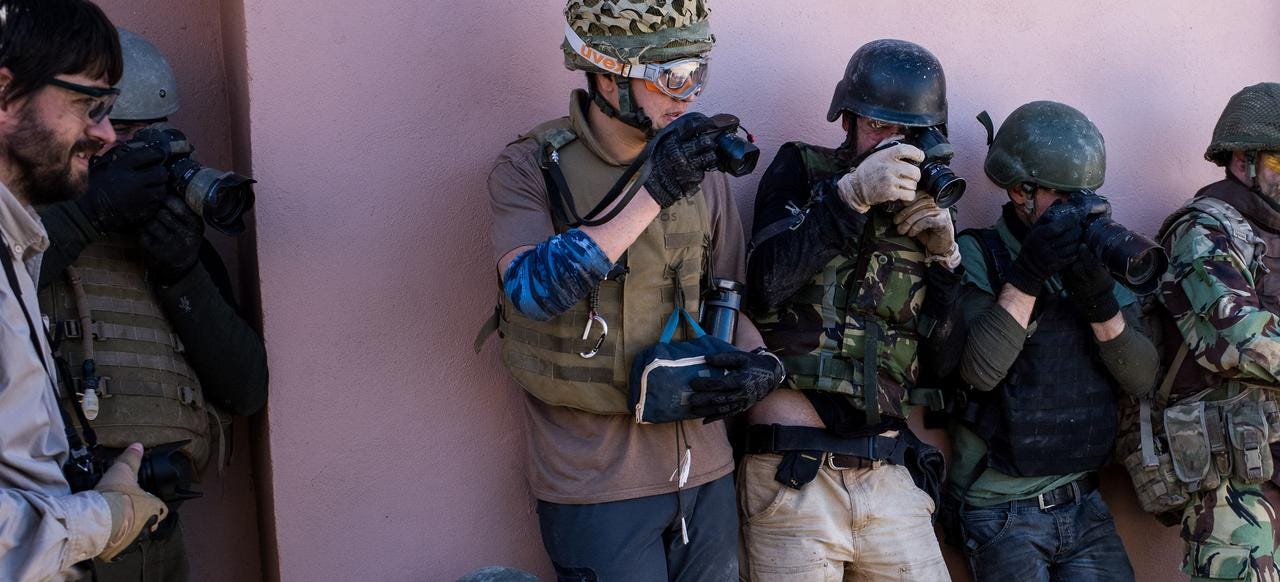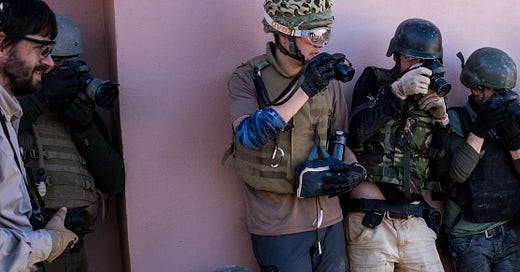My Eye-Opening Initiation at Boot Camp for War Photographers
With the world offering journalists an all-too-endless amount of conflict to cover, one very hardcore training course prepares them for the battlefield.

Photos by Andrew Renneisen
A palm tree stands ominously over a group of soldiers as they take cover against a pink wall of a rebel-held compound in the mountainous Andalusia region of southern Spain.
Shots ring out as the first soldier peeks his head around an entrance to the compound. A battle over natural resources and mineral rights has caused locals to take up small arms and fight against the Spanish government.
“Grenade!” yells the first government fighter as he pulls the pin to initiate the clearance of the compound. The rest of the three-man team is quickly through the door. The first room is soon cleared without incident.
I run behind them, trying to make a few frames before taking cover behind a pillar in the right of the room.
“Everybody good?” asks the first soldier as he prepares to enter the next room. He pulls a flashbang out, and yells just like the previous grenade. I put my head down against the pillar in front of me and take cover from the impending deafness, like I was t…
Keep reading with a 7-day free trial
Subscribe to Narratively to keep reading this post and get 7 days of free access to the full post archives.



